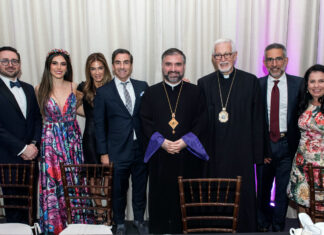TOLUCA LAKE, Calif. — Adrin Nazarian has served continuously as a representative in the California State Assembly for the 46th district in the central San Fernando Valley from 2012, and he could have served for one more two-year term before reaching the lifetime maximum allowed by law in this legislature. He is the only Armenian-American elected to serve on the state level in California at present. However, he declined this year to run for reelection. Nazarian explained why and discussed various issues important to him, as well as to Armenians, over the last several years.
Quo Vadis?
In December 2021, an independent Californian electoral commission drew new borders for electoral districts as part of the decennial effort to make sure all districts have the same number of people. California lawmakers are required to live in the districts they represent, and after the redistricting, Nazarian and two other incumbents, Laura Friedman and Luz Rivas, found themselves, all Democrats, located in the same newly redrawn 44th Assembly district, which includes the areas of Sunland-Tujunga, La Crescenta, Burbank and the northern part of Glendale. Rivas chose to move to the newly redrawn 43rd district and run for that seat, leaving the other two as contenders for the 44th district.
On February 28, 2022, Nazarian bowed out of the race, noting that although he seemed to have a “clear road to victory,” it would come at the expense of “extreme divisiveness that would have torn our communities apart at a time when we need unity and healing rather than division.” Instead, he announced that he would run in the March 2024 election for Los Angeles City Council District 2, now represented by Paul Krekorian, as the latter will by then have reached the legal limit of three terms in office.
Nazarian explained that this new position was a good fit for him at this time in his family life with children, unlike other offices which would require much more travel. Furthermore, unlike other large American cities, in Los Angeles, there are only 15 council members and one mayor, so that the legislative and executive powers become somewhat equal. He said, “The accountability becomes all the more of an opportunity for each council member to accomplish a lot in his or her district. Plus, it is a fulltime position with fulltime professional staff, which allows you to walk in with a certain vision of how you want to see an area improve or change and be able to implement that in a certain period of time.”
In the state legislature, he said that you dealt with many different issue areas but in the council, you deal with very localized matters like land use, zoning, and constituent services. Therefore, he said, “The issues are much more contained and you have greater time and opportunity to focus on them. This allows you to make a meaningful impact.”











